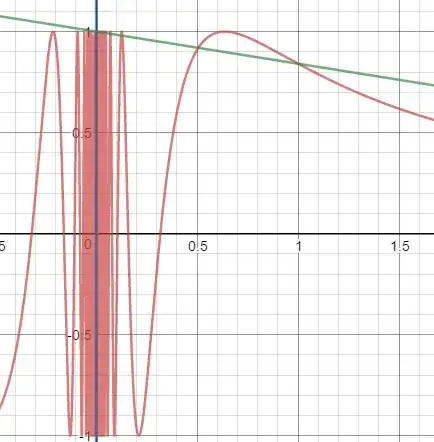Let $X = \text{ $\sin(1/x)$ space } \cup \text { line from $(0,1)$ to $(\frac{1}{2 \pi}, 0$})$,
Where $$\sin(1/x) \text { space }= \{(0,y) : y \in [-1,1] \cup \{(x, \sin(1/x)) : x \in (0, \frac{1}{2 \pi}]\}$$
Show that $X$ is path connected but not locally path connected.
The definition of locally path connected: $X$ is locally path connected if, for each $x \in X$ and every open neighborhood $U$ of $x$, there is an open $V$ with $x \in V \subseteq U$ such that any two points in $V$ can be jointed by a path in $U$.
Path connected is simple to prove, but I can't see how this isn't locally path connected.
Anyone have any ideas?
